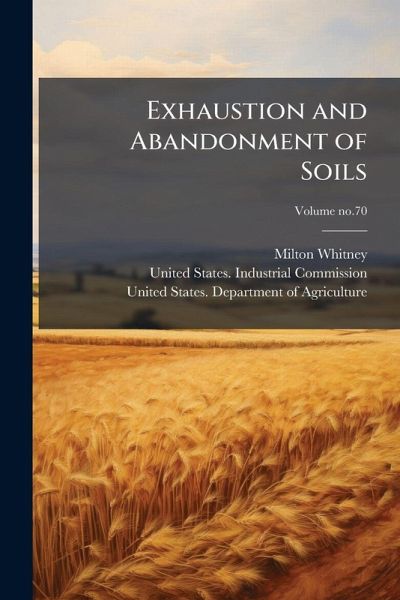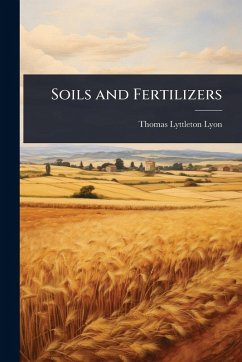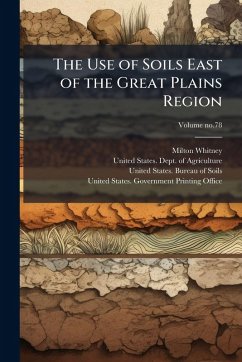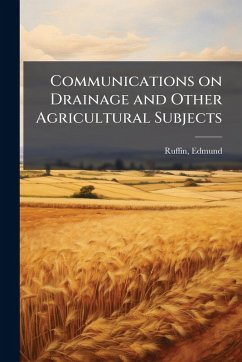
Exhaustion and Abandonment of Soils
Versandkostenfrei!
Versandfertig in über 4 Wochen
16,99 €
inkl. MwSt.
Weitere Ausgaben:

PAYBACK Punkte
8 °P sammeln!
"Exhaustion and Abandonment of Soils" presents the testimony of Milton Whitney before the Industrial Commission, offering valuable insights into agricultural practices and soil management at the turn of the 20th century. This historical document, part of Volume No. 70, sheds light on the challenges faced by American farmers dealing with soil depletion. Whitney, a prominent figure in the United States Department of Agriculture, provides expert analysis on the causes and consequences of soil exhaustion, along with potential remedies. This work is essential reading for historians, agricultural sc...
"Exhaustion and Abandonment of Soils" presents the testimony of Milton Whitney before the Industrial Commission, offering valuable insights into agricultural practices and soil management at the turn of the 20th century. This historical document, part of Volume No. 70, sheds light on the challenges faced by American farmers dealing with soil depletion. Whitney, a prominent figure in the United States Department of Agriculture, provides expert analysis on the causes and consequences of soil exhaustion, along with potential remedies. This work is essential reading for historians, agricultural scientists, and anyone interested in the historical context of modern agricultural practices. The book provides a snapshot of early scientific approaches to soil conservation and the economic impact of land degradation. Its enduring relevance lies in its examination of sustainable land use and the crucial role of scientific understanding in addressing environmental challenges. This work has been selected by scholars as being culturally important, and is part of the knowledge base of civilization as we know it. This work was reproduced from the original artifact, and remains as true to the original work as possible. Therefore, you will see the original copyright references, library stamps (as most of these works have been housed in our most important libraries around the world), and other notations in the work. This work is in the public domain in the United States of America, and possibly other nations. Within the United States, you may freely copy and distribute this work, as no entity (individual or corporate) has a copyright on the body of the work. As a reproduction of a historical artifact, this work may contain missing or blurred pages, poor pictures, errant marks, etc. Scholars believe, and we concur, that this work is important enough to be preserved, reproduced, and made generally available to the public. We appreciate your support of the preservation process, and thank you for being an important part of keeping this knowledge alive and relevant.








![A Guide to the Scientific Examination of Soils [microform]: Comprising Select Methods of Mechanical and Chemical Analysis and Physical Investigation Cover A Guide to the Scientific Examination of Soils [microform]: Comprising Select Methods of Mechanical and Chemical Analysis and Physical Investigation](https://bilder.buecher.de/produkte/65/65627/65627162n.jpg)



